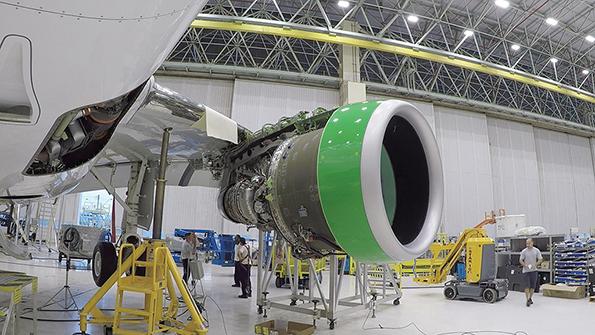
Ask the Editors: The Aviation Week Network invites our readers to submit questions to our editors and analysts. We’ll answer them, and if we can’t we’ll reach out to our wide network of experts for advice.
How might the engine technology paradigm change with the new focus on trip cost versus cost per passenger-mile? Could the Pratt & Whitney Geared Turbofan-powered Embraer E190-E2 and Airbus A220 gain share in this environment?
Aviation Week Senior Propulsion Editor Guy Norris responds:
Anything that lowers trip costs is a benefit to the carriers right now, particularly with a predicted market shift to lower-capacity aircraft. Pratt & Whitney’s PW1000G family is in the driver’s seat, as it powers the bulk of these new-generation products: the Airbus A220, Embraer E-Jet E2 and Mitsubishi SpaceJet.
The trickle down in capacity reduction along with the early retirement of midsize fleets (Boeing 757s/767s) and older narrowbodies (Boeing 737NGs and MD-80/90s and early Airbus A320s) also will see a preference for the more advanced single-aisles. That includes the Pratt & Whitney- and CFM Leap 1-powered A320neos and, by the end of this year, the reintroduced Boeing 737 MAX.
However, with airlines fighting for survival, it remains to be seen whether these trends will drive significant new orders. For the moment, the move to aircraft with the latest-generation engines will be restricted to the reactivation of newer aircraft already in store as well as commitments to accept others already on order.






Comments
Until airlines start flying again and the price of fuel goes up, airlines neither needs nor can afford new airplanes of any size with fuel efficient engines.
In my view the public does not now, and will not in the future, want smaller aircraft as such. What they, and perhaps health regulators, will demand, is significantly fewer seats on each aircraft.
Imagine 737/A320s with 80-100 seats. That's the future. Not an A220 / E-195 / M90 with 30 seats.
The way we "rightsize" the industry first is by removing seats from the airplanes. Then we shrink the fleet count to meet the new post-COVID demand once we get to post-COVID rather than mid-COVID.
This will almost certainly result in an industry that looks a lot more like it did pre-deregulation. Air travel in this manner would be expensive, used almost exclusively by the top 10% of earners, and by those spending their employer's money.